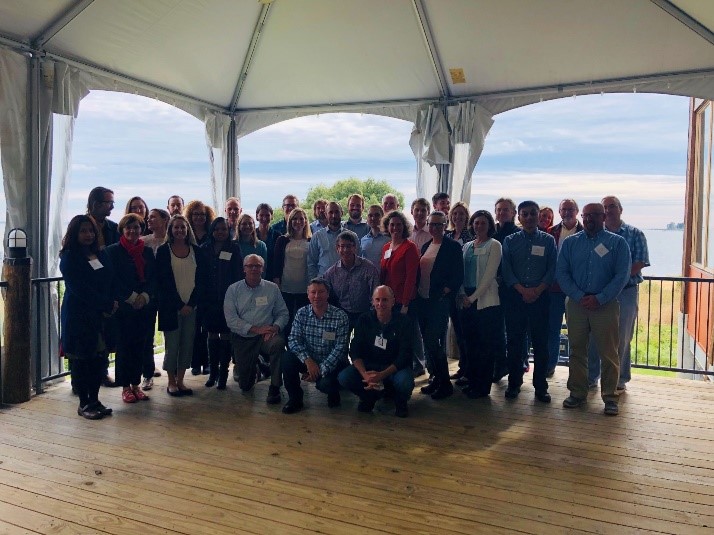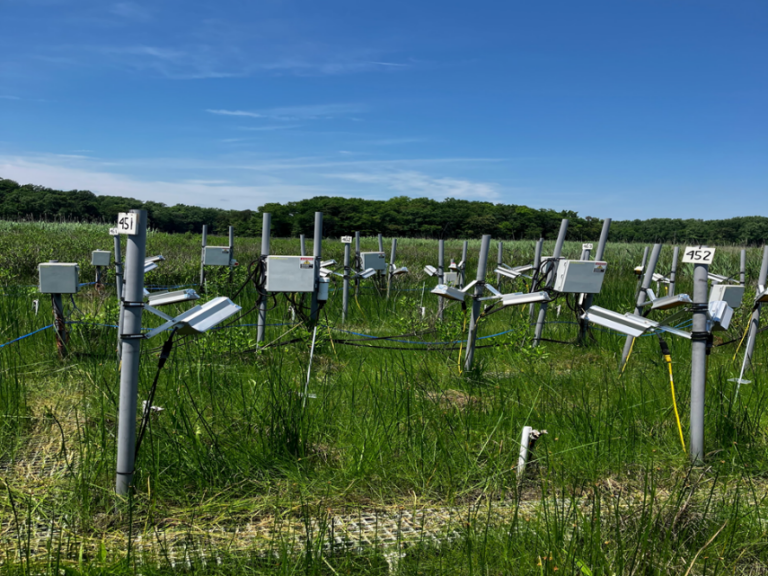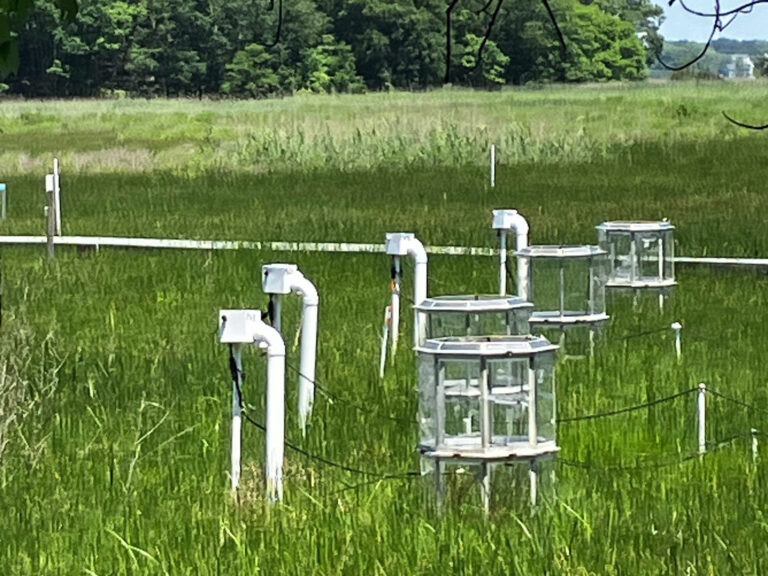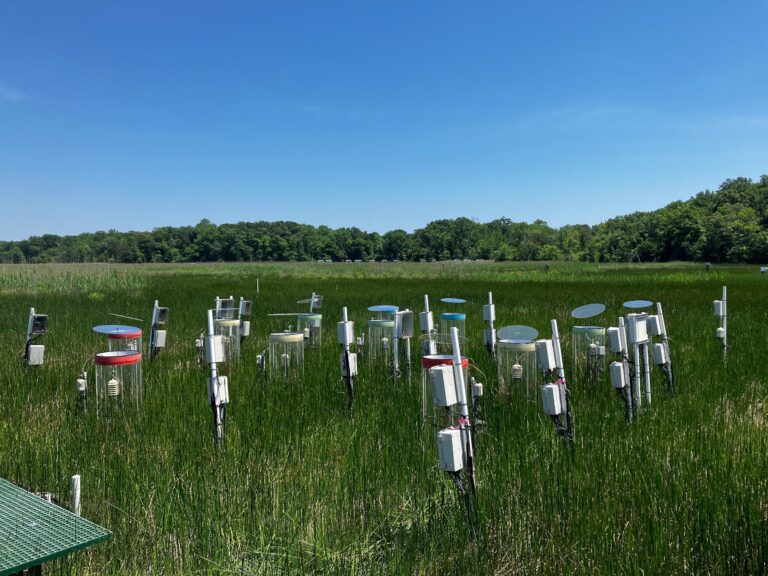This past week MRRI scientists joined Restore America’s Estuaries’ Blue Carbon Working Group in Washington DC to discuss current legislation and restoration initiatives aimed to preserve and enhance blue carbon repositories of the coastal US.
On the first day keynote speakers from EPA, NOAA, USGS, SERC, The Nature Conservancy, Maryland Department of the Environment, and the Theodor Roosevelt Conservation Partnership as well as academics painted a diverse picture on the lessons learned and challenges the blue carbon initiative faces.

On the second day participants visited the Smithsonian Environmental Research Center to learn about SERC’s long term carbon sequestration and natural green house gas emission experiments. Here we learned about models that look at how marsh vegetation would react to rising ambient temperature and CO2 concentration, and how would all these changes effect natural methane emissions of the tidal marshes.
All treatment have been going on for over a decade and the all see that rising ambient GHG concertation or temperature select for certain phenotypes, that are better suited to survive as the Earth’s atmosphere slowly heats up.

Photo 1. Decade long heat treatment that exposes vegetation to higher temperatures in order to model the rising global temperature’s effect on marsh vegetation.

Photo 2. Gas chambers that are closed on the side but open at the top to keep CO2 at a steady 700ppm to model how the marsh vegetation would react to rising ambient carbon dioxide concentrations.


